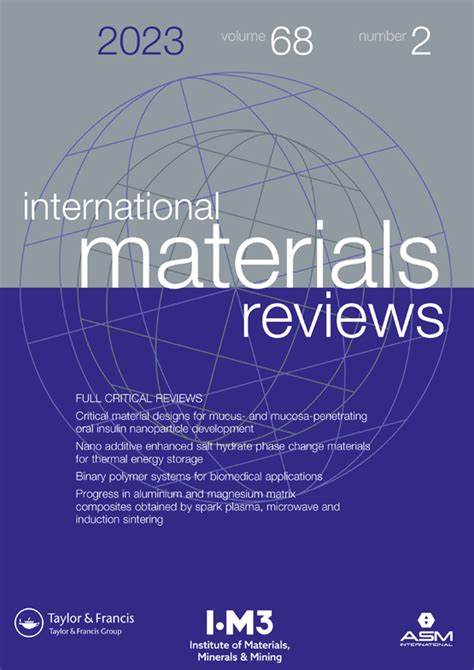A review of the metastable omega phase in beta titanium alloys: the phase transformation mechanisms and its effect on mechanical properties
IF 15.5
1区 材料科学
Q1 MATERIALS SCIENCE, MULTIDISCIPLINARY
引用次数: 29
Abstract
ABSTRACT Since its discovery in 1954, the omega (ω) phase in titanium and its alloys has attracted substantial attention from researchers. The β-to-ω and ω-to-α phase transformations are central to β-titanium alloy design, but the transformation mechanisms have been a subject of debate. With new generations of aberration-corrected transmission electron microscopy and atom probe tomography, both the spatial resolution and compositional sensitivity of phase transformation analysis have been rapidly improving. This review provides a detailed assessment of the new understanding gained and related debates in this field enabled by advanced characterization methods. Specifically, new insights into the possibility of a coupled diffusional-displacive component in the β-to-ω transformation and key nucleation driving forces for the ω-assisted α phase formation are discussed. Additionally, the influence of ω phase on the mechanical properties of β-titanium alloys is also reviewed. Finally, a perspective on open questions and future direction for research is discussed.钛合金亚稳欧米茄相的相变机理及其对力学性能的影响
自1954年发现钛及其合金中的ω (ω)相以来,一直受到研究人员的广泛关注。β-to-ω和ω-to-α相变是β-钛合金设计的核心,但其转变机制一直是争论的主题。随着新一代像差校正透射电子显微镜和原子探针层析成像技术的发展,相变分析的空间分辨率和成分灵敏度都得到了迅速提高。这篇综述提供了一个详细的评估的新认识获得和相关的争论在这一领域的先进表征方法启用。具体来说,讨论了β -ω相变中耦合扩散-位移分量的可能性和ω辅助α相形成的关键成核驱动力的新见解。此外,还综述了ω相对β-钛合金力学性能的影响。最后,对未来的研究方向和有待解决的问题进行了展望。
本文章由计算机程序翻译,如有差异,请以英文原文为准。
求助全文
约1分钟内获得全文
求助全文
来源期刊

International Materials Reviews
工程技术-材料科学:综合
CiteScore
28.50
自引率
0.00%
发文量
21
审稿时长
6 months
期刊介绍:
International Materials Reviews (IMR) is a comprehensive publication that provides in-depth coverage of the current state and advancements in various materials technologies. With contributions from internationally respected experts, IMR offers a thorough analysis of the subject matter. It undergoes rigorous evaluation by committees in the United States and United Kingdom for ensuring the highest quality of content.
Published by Sage on behalf of ASM International and the Institute of Materials, Minerals and Mining (UK), IMR is a valuable resource for professionals in the field. It is available online through Sage's platform, facilitating convenient access to its wealth of information.
Jointly produced by ASM International and the Institute of Materials, Minerals and Mining (UK), IMR focuses on technologies that impact industries dealing with metals, structural ceramics, composite materials, and electronic materials. Its coverage spans from practical applications to theoretical and practical aspects of material extraction, production, fabrication, properties, and behavior.
 求助内容:
求助内容: 应助结果提醒方式:
应助结果提醒方式:


